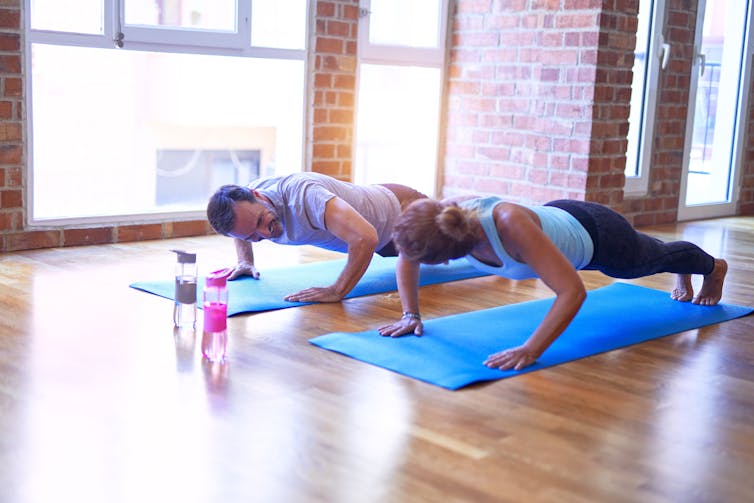While it’s almost unnoticeable to begin with, nearly every cell, organ and biological process gets a little bit worse every year we’re alive starting from age 30 or so. The sum of these processes is what we know as ageing.
For most of us, loss of muscle strength and mass are some of the first and most obvious age-related changes we see. While this might only start out as a couple of extra little aches and pains, over time a lack of muscle mass can lead to a number of issues – including poor balance, frailty and loss of independence. It’s also associated with a myriad of health problems, including higher risk of diabetes and cardiovascular disease and even dementia.
While researchers aren’t entirely sure why muscle mass decreases so much as we get older, the good news is that we do know regular exercise can help lessen this impact – and can even delay some of this inevitable muscle loss. Regular physical activity is also shown to lower risk of preventable diseases, maintain physical function well into old age, and even improve immune function.
Get moving
Given how important muscle is for our health, the best way to maintain it after 30 is to keep moving.
But let’s say you’re someone who hasn’t regularly exercised in a few years, or has never done muscle-building exercises before.
First and foremost, remember that ageing doesn’t mean you need to avoid heavy exercise. Our research suggested that younger and older men recovered in a similar manner to heavy muscle-building resistance training, so long as the training was tailored to each participant’s fitness level.
However, it’s important to consider your abilities before you begin exercising. A common mistake people make after being off training for years (or even decades) is trying to do what they used to do, or doing too much too quickly in those first workouts. This may lead to injury, so it’s important to build your workouts up gradually.
Realistically, the best workout plan to follow is the NHS’s physical activity recommendations for 18-65-year-olds. This says people should aim to be physically active most days, and do muscle-building exercises at least two days per week.

But what kind of muscle-building exercises should you do? Well, there’s actually a myriad of different types of resistance exercise to choose from, and all are more or less equally as beneficial as the other. The cliche people immediately think of is large, muscular people lifting heavy weights in a gym, but there many more options out there.
So if you prefer doing bodyweight exercises such as pilates, using resistance bands, or hard work while gardening over lifting barbells, that’s what you should aim to do twice a week. Enjoyment counts for a lot, especially if it means you’ll keep doing your new exercise routines.
Endurance-based exercise (such as walking, running and cycling) are also very good for you in multiple ways, beyond just building muscle and improving heart health. There’s also a very clear relationship between longevity and doing light physical activity daily.
However, it’s important not to do too much of a good thing – especially high-intensity, resistance-based training. Research shows that doing more vigorous high intensity physical activity than recommended isn’t associated with substantial benefits to longevity. For clarity, this data doesn’t suggest the high intensity is negative in terms of health, just that more isn’t necessarily better.
From a dietary point of view, many older people don’t eat enough protein. Sufficient protein intake is necessary to increase and maintain muscle mass – even more so if you’re regularly exercising. Current guidelines recommend a minimum of 0.8 grams of protein per kg of body mass per day for all adults.
But you’ll need to double this to 1.6 grams per kg of body mass if you’re looking to build muscle. So for a person who weighs 70kg, they would need to eat around 112g of protein per day to build muscle. This would be the equivalent of eating approximately one large chicken breast, a protein shake, three eggs and a can of tuna (though it will vary depending on what products you use, so be sure to check the labels).
This seems to be especially important for physically active older people(over 60 years of age). It’s also good to spread the protein you consume evenly throughout the day to help your body absorb so much protein as it can per meal.
While muscle will still inevitably decrease with age no matter how much you exercise, being physically active often is still one of the best ways we know of when it comes to maximising both good health and fitness and lifespan. And the earlier you make exercise a habit, the better off you may be in old age.
Bradley Elliott, Senior Lecturer in Physiology, University of Westminster
This article is republished from The Conversation under a Creative Commons license. Read the original article.

